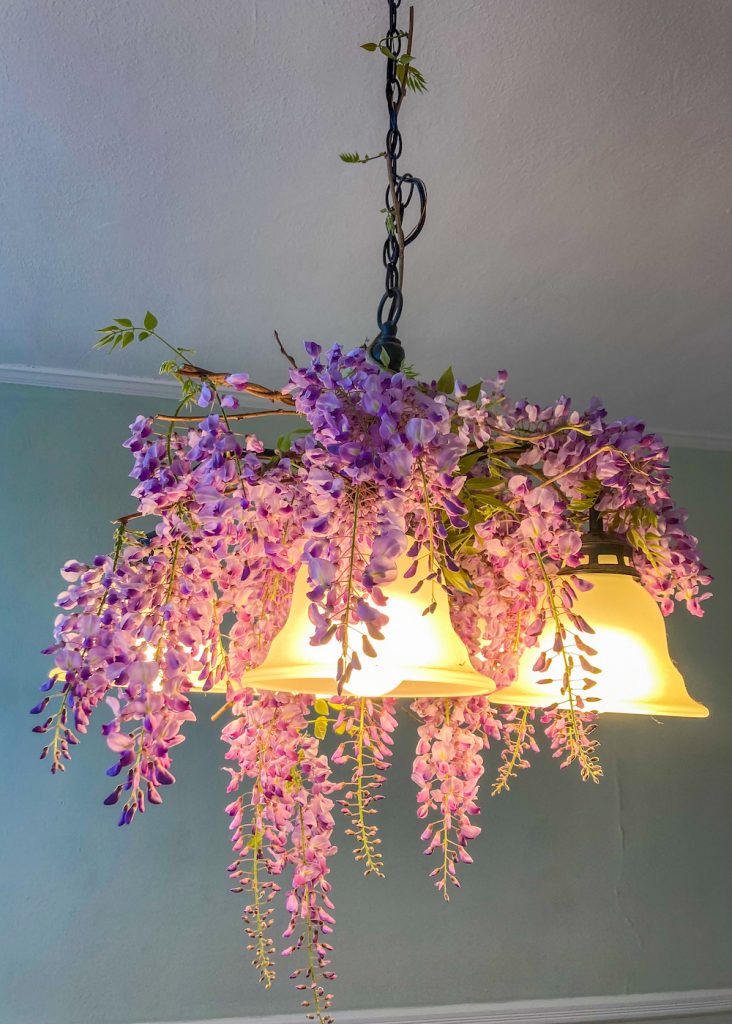The Triangle is now flush with the coldhearted princess of invasive plants, Chinese wisteria (Wisteria sinensis). While you’re distracted by its beautiful grape-like clusters of flowers and sweet scent, its vines are slithering up and suffocating trees in search of the sun. This woody vine grows rapaciously through runners and seeds, but there are ways we can curb its spread while still enjoying its beauty.
Wisteria was brought to the United States in 1816 as an ornamental from its home in China. People believed the sun-loving vine to be the perfect adornment for porches, gazebos, and fences, and although its cascading inflorescence is a colorful addition to a garden, wisteria is a harmful invasive plant. Wisteria wraps around trees, shrubs, and manmade structures in a counterclockwise fashion like a silent boa constrictor, girdling and eventually toppling its host. Without any natural insect predators or disease to stop its unfettered growth, wisteria forms dense thickets and shades out native plants.
As a member of Fabaceae, the legume family, wisteria is a nitrogen fixer, meaning it converts atmospheric nitrogen into useful nutrients for the soil. This may explain why wisteria is most often found in disturbed areas like roadsides, ditches, and forest edges. The plant spreads by rooting stolons as well as seeds that explode from their pods emitting a popping noise-making wisteria an autochore, a plant that ejects its seeds without an external agent.
Foliar herbicide is also effective but can hurt nearby non-target species.
Wisteria, like all invasives, is not an easy plant to control. It is essential to physically remove the root system or apply an herbicide to the cut stump to completely eradicate the plant. Foliar herbicide is also effective but can hurt nearby non-target species. If you find a wisteria that is girdling a tree it is important to cut the plant at the stem and let the rest die back to relieve the victim. Regular pruning of wisteria will not get rid of the plant but will help prevent it from getting too out of control.
Native vining alternatives to Chinese wisteria include Dutchman’s pipe (Aritolochia macrophylla), Carolina jessamine (Gelsenium sempervirens), coral honeysuckle (Lonicera sempervirens), crossvine (Bignonia capreolata), and American wisteria (Wisteria frutescens). American wisteria should be planted with caution as it is still aggressive and weedy. It is easily distinguishable from invasive Chinese and Japanese wisteria because of its stout, more compact flower clusters which bloom in the summer rather than spring.

Wisteria sinensis, commonly known as the Chinese wisteria, is a species of flowering plant in the pea family, native to China.
Creative Control
I love cutting wisteria branches for indoor decor and as a means of preventing seeds from forming and spreading further. Wisteria’s lavender color and smell bring a spring freshness to the home and the plant’s abundance means there are plenty of flowers to go around. Cutting whole vines can ease the strain on the wisteria’s host and are beautiful draped over a doorway or light fixture. The flowers dry quickly, but fear not! More than likely, another tree nearby is being smothered by the vine and ready for the sweet relief of a human with some clippers.

